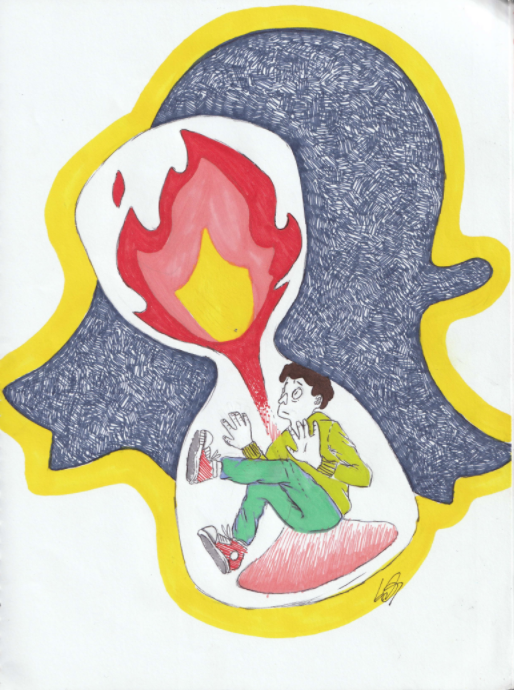Grappling With Teens’ Attachment to Snapchat
November 29, 2017
What is Snapchat? Repeatedly sending photos with captions to friends and posting updates about your life on your story. When you don’t think about it, Snapchat seems like any other form of social media. When adults ask me to describe Snapchat or I mention it in conversation with my friends, I often pause for a minute and think about what it really is. It seems foolish.
Why are we drawn to such a shallow concept? I use Snapchat, and I originally came up with the idea for this piece because I wanted to find out why it intrigued me and why I felt obligated to send to my “streaks” (people who I’ve sent a Snapchat to for however many consecutive days) every day.
I enjoy using Snapchat, but I do feel like it takes up a lot of my time. Some might say it creates inauthenticity in young people. Why is such a trivial way of communicating so attractive to teenagers? And what makes it fun? There doesn’t seem to be one concrete answer.
However, what teens seem to agree on is that it draws our attention away from living in the moment. Having a phone light up with a Snapchat while talking with a family member, teacher, or friend is distracting. It can also be seen as offensive or rude to the person who is sitting right in front of you.
Snapchat can disconnect us from our real lives because we concentrate only on the amount of “streaks” and who is responding to whom. Does our attraction towards Snapchat lie in the desire to be liked by others?
Often, the number of friends or Snapscore (number of Snapchats a person has sent) that someone has can seem to determine their “popularity.” It can sometimes become a competition. If someone has more followers or likes than someone else, they may feel better about their social status because they know that someone else is lower than them. That seems harsh when put into words, but if you think about it, I’m sure we all have thought that at some point—in relation to Snapchat, Instagram, or any other form of social media. During the process of writing this piece, I realized I was using Snapchat less and less. This was due to the fact that, in the back of my mind, I was slowly starting to see the inauthenticity of it.
How are my friends benefiting from seeing the corner of my face, my leg, or a wall every day? There seems to be no value in the photos I send, and all of the conversations I have on the chat feature could have easily happened over text. The one feature I feel I do benefit from is the stories.
Watching friends’ stories is one of the interesting aspects of Snapchat because it allows me to reconnect with people I haven’t seen in awhile and see what they are up to. It also is a way to get news, since some news channels post stories for people to watch as well.
“It’s good in that you can see funny things that happened to your friends and you get to see funny photos, but otherwise you could just text people, and it’s not really helping our society,” said Terra Johnson, a CRLS tenth grader.
It seems that many teens agree that Snapchat does not do a whole lot of good in our world, but it doesn’t hurt to stay connected with people that you might not see every day. Snapchat can be a fun way to relax and destress after (or during) a long day at school—as long as we are conscious of how much time we spend on Snapchat versus the amount of time we spend with real, live people.
This piece also appears in our November print edition.









